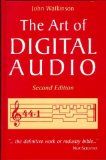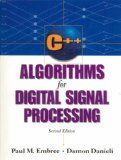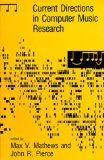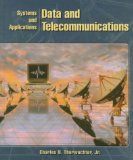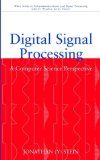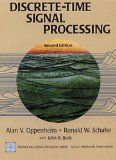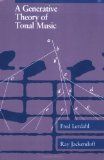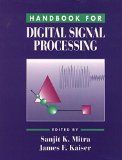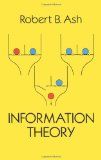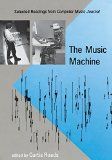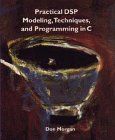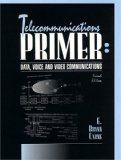音频处理方面的好书
please note: the copyright on these reveiws is held by the individual authors. please do not copy these reviews without permission; link to this page instead.
3-D Sound for Virtual Reality and Multimedia
by Durand R. Begault
Hardcover - 293 pages (September 1994)
Ap Professional; ISBN: 0120847353
($40)
From: Chuck Cooper
Only modest amounts of formal DSP, but plenty of psychoacoustical stuff.
Advanced Signal Processing and Digital Noise Reduction
by Saeed V. Vaseghi
Hardcover - 456 pages 2nd edition (September 2000)
John Wiley & Sons; ISBN: 0471626929
($95)
From: Frederick Umminger
All you want to know about noise reduction and audio restoration. Topics include signal modeling, model-based interpolation, click removal, thump removal, broadband noise reduction, echo cancellation, and blind deconvolution.
Applications of Digital Signal Processing to Audio and Acoustics
edited by Mark Kahrs
Hardcover (March 1998)
Kluwer Academic Publishers; ISBN: 0792381300
($145)
From: Frederick Umminger
A collection of great survey articles by experts on various music dsp topics such as reverberation algorithms, sinusoidal analysis/synthesis, and physical modeling.
The Art of Digital Audio
by John Watkinson
Hardcover - 685 pages 2nd edition (January 1994)
Butterworth-Heinemann; ISBN: 0240513207
($85)
From: douglas repetto
i haven't read this book yet, but it has a pretty good reputation. also check out Ken Pohlmann's Principles of Digital Audio for more of the same 'how does a SPDIF work' sort of info.
The Art of Electronics
by Paul Horowitz and Winfield Hill
Hardcover - 1125 pages 2nd edition (1989)
Cambridge Univ Pr (Short); ISBN: 0521370957
($70)
From: douglas repetto
This is a must-have book for anyone interested in building weirdo electronic devices.
Beyond Midi:
The Handbook of Musical Codes
by Eleanor Selfridge-Field (Editor), Donald Byrd (Contributor), David Bainbridge (Contributor)
Hardcover - 648 pages (September 1997)
MIT Press; ISBN: 0262193949
($55)
From: douglas repetto
i wrote an extended review of this book for NOTES (the Quarterly Journal of the Music Library Association). i think it was the winter 1998/99 issue. to quote myself: "Beyond MIDI is a valuable reference text for anyone dealing with the theory or practice of encoding music data. Many systems--commercial, experimental, defunct, and just created--are presented, often in great detail."
i'd add that this book probably isn't very useful to you unless you're actively involved in writing some sort of musical data storage and retrieval system. it's also pretty biased towards traditional western music. there's a website here: http://musedata.stanford.edu/publications/books/beyondmidi/
C Algorithms for Real-Time Dsp
by Paul M. Embree
Hardcover - 248 pages (May 1995)
Prentice Hall Press; ISBN: 0133373533
($78)
From: Chuck Cooper
Just when I thought I was cured of buying DSP books rather than studying them, I had to get this one a few days ago, because I was starting to mess with the Sharc DSP and I barely know C. It's really good-- many of the examples concern audio, synthesizers, and speech. It gives practical info about commercial DSPs and their development systems.
From: the Amazon.com site:
it's a very poor-written book. This book's title and topics sounds very attractive. Unfortunately, it has nothing more than like a reference card!! The content need more detail presentation and analysis to give readers something valuable. A book with only about 200 pages of headlines sale for more than $70, this is absolutely ridiculous!! The worst book in my colletion.
C++ Algorithms for Digital Signal Processing
by Paul M. Embree and Damon Danieli
Hardcover - 608 pages 2nd edition (November 13, 1998)
Prentice Hall Press; ISBN: 0131791443
($79)
From: Michael Gogins
I used to have the C version of this book and I now have the new C++ version you mention. I used the matrix code from the C book as the basis for some of my own code in the past (I no longer use it, having moved on to other fuller libraries). I still look at the C++ book from time to time in my continuing informal efforts at DSP self-education. The book is clearly written and covers most of the same basic ground as a dozen other books. If one were committed to DSP coding in C++ this book would make a good starting point.
Computer Music:
Synthesis, Composition, and Performance
by Charles Dodge, Thomas A. Jerse
Hardcover 2nd edition (July 1997)
Schirmer Books; ISBN: 0028646827
($42)
From: douglas repetto
a very good introduction to the fundamentals of computer music. a nice balance of technical and musical material, with lots of pointers to musical examples. covers computer composition and performance in addition to dsp issues. this is a new edition of an old classic - they even updated the code from FORTRAN to C++!
The Computer Music Tutorial
by Curtis Roads
Paperback (January 1996)
MIT Press; ISBN: 0262680823
($58)
From: Chuck Cooper
This may be slightly off-topic from DSP, but it does have a fair amount of DSP and it's something everyone should probably have, except my mother. It's only $50 bucks for a big fat paperback that authoritatively but non-tediously touches on lots of good musical and technical stuff, with plenty of references to more detailed info.
Computer Speech : Recognition, Compression, Synthesis
by Manfred R. Schroeder
Hardcover - 200 pages (May 1999)
Springer Verlag; ISBN: 3540643974
($55)
From: Paul Kellett
The full title is "Computer speech: recognition, compression, synthesis: with introductions to hearing and signal analysis and a glossary of speech and computer terms".
But there's even more to it than that - information on human speech production, binaural hearing and reverberation (yes, it's that Schroeder!) and many anecdotes collected over a long career.
The first half of the book covers a lot of ground and is easy to read (but gives plenty of references) and the second half contains the heavy stuff: Signal analysis, Hilbert transform, Cepstrum, Vocal tract modelling... but you won't find digital implementations or DSP here, just the maths.
Computers and Musical Style
by David Cope
Hardcover (November 1991)
A-R Editions; ISBN: 0895792567
($46)
From: Frederick Umminger
How to make a computer compose music in the style Mozart, Bach, etc.
The Count Counts Scary Things
by Stephanie St. Pierre, Richard Walz (Illustrator), Michael Smollin (Illustrator), Stephanie St Pierre
Reading level: Baby-Preschool
Library Binding - 24 pages (September 1998)
Random Library; ISBN: 0679987029
($9)
From: Amazon.com
With one silly spider, two Twiddlebugs, three batty bats, etc., this book illustrates scary things from 1 to 10. Sesame Street's favorite Count-er takes kids on a counting tour of his weird and wonderful castle. "Sesame Street's" Count wanders through his weird and wonderful mansion counting all kinds of strange things. Full color.
A Course in Digital Signal Processing
by Boaz Porat
Hardcover - 602 pages (October 1996)
John Wiley & Sons; ISBN: 0471149616
($100)
From: colby leider
boaz porat's 'a course in digital signal processing' is a thorough intro text.
4.5 stars out of 5.
Current Directions in Computer Music Research
(System Development Foundation Benchmark Series, 2)
by Max V. Mathews (Editor), Pierce John R., John R. Pierce (Editor)
Paperback Reprint edition (November 1991)
MIT Press; ISBN: 0262631393
($25)
From: Booknews, Inc. , December 1, 1989
The editors of this collection of 21 original contributions by composers, behavioral scientists, engineers, and other specialists are members of the music faculty at Stanford. Among the specific topics covered are speech songs, synthesis of the singing voice, spatial reverberation, the simulation of bowed instruments, automatic counterpoint, and (ugh!) a conductor program utilizing a mechanical baton. A compact disk and videotape to accompany this collection are available on special order from MIT (not seen). Annotation copyright Book News, Inc. Portland, Or.
Cutting Edge Web Audio
by Ron Simpson Jr.
Paperback - 400 pages Bk&Cd Rom edition (April 1998)
Prentice Hall Computer Books; ISBN: 0130807532
($32)
From: Peter Traub
A beginners guide to creating audio for the Web. It covers various methods of implementation such as RealAudio, Shockwave, Liquid Audio, QuickTime, Midi, etc. It is for Mac and PC users. "Cutting Edge" has plenty of tutorials and nice little graphics to go along. It also comes with a CD-ROM containing lots of demoware, freeware, and shareware. Due to rapidly changing (and advancing) standards on the Web, I don't see this book being "cutting edge" for very long (especially since it was published in 1998).
Data and Telecommunications : Systems and Applications
by Charles N. Thurwachter
Hardcover - 688 pages (July 1999)
Prentice Hall; ISBN: 0137939108
($90)
From: Amazon.com
Key Benefit: Using a practical, "down-to-earth" approach, this book explores important areas of communications systems and networking without resorting to advanced mathematics. It introduces the basics using an analogy with daily life whenever possible; extends the basic concepts to illustrate how the system works from a high level; and then fills in details of operation whenever possible. Key Topics: Fundamental Concepts. Electromagnetic Signals. Metallic Media. Optical Media. Antennas. Signal and Fourier Analysis. Amplitude Modulation. Amplitude Modulators and Demodulators. Angle Modulation and Demodulation. Pulse Modulation. Multiplexing. Coding. Digital Modulation. OSI Model. Networking Hardware. Telecommunications. Three Protocols. Market: For technicians who want to keep pace with current developments in the field and for non-technical professionals who need a general understanding of networking or telecommunications hardware.
From: douglas repetto
this is a pretty dense book, definitely designed as a textbook. there are lots of example problems like: "Find the number of Hamming bits needed for a message length of 1000 bits." and "Determine the values of C and R for a voice-band modulating signal using the envelope detector." there's lots of useful technical information on things like: wave propagation; various media and physical connector specs; modulation and encoding schemes; etc. it's definitely more "technician" oriented than "music-dsp" oriented, but it's full of interesting info none-the-less, particularly if you're dealing with hardware on a low-level.
Developer's Guide to Programming Sound
(previously A Programmer's Guide to Sound)
by Tim Kientzle
Paperback - 446 pages Bk&Cd-Rom edition (December 1997)
Addison-Wesley Pub Co; ISBN: 0201419726
($32)
From: Amazon.com
Synopsis: An all-in-one introduction to implementing sound, this guide provides a comprehensive practical resource for programmers. Tim Kientzle, technical editor of Dr. Dobb's Journal, presents the basic principles of sound and sound processing, together with concrete implementation details for a variety of sound file formats and algorithms. The CD-ROM includes royalty-free sound libraries and a rich collection of utilities.
Digitale Audiosignalverarbeitung
by Udo Zölzer
Hardcover - 303 pages (April 1997)
B. G. Teubner Stuttgart; ISBN: 3-519-16180-X
(DM 89,-)
From: Stefan Stenzel
If you have read enough introductions to DSP and you are looking for something that goes beyond the usual stuff, this book will offer you good reading. It covers topics as dithering, filtering, room simulation, sample rate conversion, audio compression and more. The explanations are brief but good to understand. The book is in german, which is not very helpful because the author insists on german expressions for things most DSP'ers are familiar in english. I think an english translation is also available.
Digital Audio Restoration
by Simon J. Godsill and Peter J.W. Rayner
Hardcover - 256 pages Bk&Cd Rom edition (October 1998)
Springer Verlag; ISBN: 3540762221
($88)
From: Frederick Umminger
All you want to know about noise reduction and audio restoration. Godsill and Rayner were founding members of CEDAR. Topics include signal modeling, model-based interpolation, click removal, thump removal, broadband noise reduction, and fixing wow and flutter.
Digital Audio Signal Processing
by Udo Zölzer
Hardcover - 220 pages (August 1997)
John Wiley & Sons; ISBN: 0471972266
($100)
English version of Digitale Audiosignalverarbeitung (above). There's a website for it here: http://www.unibw-hamburg.de/EWEB/ANT/Mitarbeiter/zoelzer/book.html
From: Paul Kellett
Although it covers a lot of areas and explains them well, there often isn't enough detail for you to actually do it yourself - when other books describe a reverb algorithm they might give you some actual numbers as a starting point. The section on dynamics processing was rather formal and gave the impression the author didn't really know much about the subject. Worth reading once. I didn't buy it, but did photocopy a couple of pages.
Digital Audio Signal Processing:
An Anthology (Computer Music and Digital Audio Series)
by John Strawn (Editor)
this was out of print,
but there's now a reprint available here!
From: Sean Costello
An excellent introduction to the basics of audio DSP. Very nice for people without engineering backgrounds, as it has a nice introduction to DSP mathematics without the use of calculus. Good coverage of digital filter theory & the phase vocoder, as well as a nice chapter that delves into concepts such as discrete summation formulas in music synthesis. Note: as this is a very difficult book to track down, it is worth noting that all of the chapters (save the chapter on spiral synthesis) are available as reprints from CCRMA. You can order the individual publications from
http://ccrma-www.stanford.edu/CCRMA/Overview/publications.html
Chapter listing:
1) F.R. Moore, "An Introduction to the Mathematics of Digital Signal Processing."
2) J.O. Smith, "An Introduction to Digital Signal Theory."
3) T.L. Petersen, "Spiral Synthesis." Available online at http://staff.washington.edu/bradleyb/spiralsynth/spiral.html
4) J.A. Moorer, "Signal Processing Aspects of Computer Music: A Survey." (an update of the 1977 article available through CCRMA)
5) J.W. Gordon and J. Strawn, "An Introduction to the Phase Vocoder."
From: Chuck Cooper
A classic. Plenty of basic meat, excepting a weird chapter on "spiral synthesis"; even that may be worthwhile for intuitive pole-zero stuff. Recommended.
Digital Communications: Fundamentals & Applications
by Bernard Sklar
Hardcover 2nd Bk&cdr edition (January 11, 2001)
Prentice Hall; ISBN: 0130847887
($75)
From: douglas repetto
This is a hefty book meant for a one or two semester course in digital communications. Digital communications, as opposed to digital signal processing, is where you learn all about how to encode, transmit and decode digital information. It's less about the content of that information than it is the digital form that the information is in. Because this is a very broad book, much of the information in it isn't super useful for people working primarily with sound on a computer. Many of the topics, such as encryption and various coding and modulation techniques are geared more toward folks designing cell phones than people making electronic music. So this isn't a book you'd get if you're looking for information on implementing digital filters or generating band limited waveforms. However, if you're working with any sort of encoding problem (audio, video, text, whatever) or are building your own hardware devices and designing codecs for them, then this monster probably has what you're looking for. It's written in a math-heavy but friendly and accessible style with gobs of equations and diagrams. This probably isn't the best book for teaching yourself digital communications theory (it assumes you already know quite a bit about dsp) but it makes a very good general reference once you know more-or-less what you're doing.
The chapters and Appendixes:
Signals and Spectra; Formatting and Baseband Modulation; Baseband Demodulation/Detection; Bandpass Modulation and Demodulation/Detection; Communications Link Analysis; Channel Coding: Part 1; Channel Coding: Part 2; Channel Coding: Part 3; Modulation and Coding Trade-Offs; Synchronization; Multiplexing and Multiple Access; Spread-Spectrum Techniques; Source Coding; Encryption and Decryption; Fading Channels; A Review of Fourier Techniques; Fundamentals of Statistical Decision Theory; Response of a Correlator to White Noise; Often-Used Identities; s-Domain, z-Domain and Digital Filtering.
The book comes with a supplementary CD-ROM that contains educational version of ELANIX's SystemView software, a DSP tutorial and extra exercises.
Digital Fundamentals
by Thomas L. Floyd
Hardcover 6th edition (August 1996)
Prentice Hall; ISBN: 0133984885
($98, $88 for textbook binding)
From: Booknews, Inc. , December 1, 1996
Geared toward both student and instructor, this text covers basic concepts, current technology, practical applications, and troubleshooting. Each chapter contains a self-test. Contents include number systems, operations, and codes; logic gates; Boolean algebra and logic simplification; combinational logic and its functions; programmable logic devices (PLDs); flip-flops and related devices; counters; shift registers; sequential logic applications of PLDs; memories; interfacting; microprocessors and microcomputers; and integrated circuit technologies. Three appendices cover data sheets, error detection and correction, and conversions. No bibliography. Annotation c. by Book News, Inc., Portland, Or.
From: douglas repetto
A nice low-level introduction to various aspects of digital technology (particularly on the hardware side.) It has nothing specifically to do with sound (except for a brief section on D/A and A/D conversion); it's much more of a "how do computers work" book. There are lots of circuit diagrams, data sheets, timing diagrams, logic diagrams, etc. It probably won't be terribly useful if you're a software-only type, but it's a good read for anyone working with microcontrollers, custom devices, etc. (assuming you haven't covered those things in an engineering class at one time or another...)
Digital Signal Processing - a Computer Science Perspective
by Jonathan (Y) Stein
Hardcover - 856 pages 1st edition (September 2000)
John Wiley & Sons; ISBN: 0471295469
($110)
From: the author (Jonathan (Y) Stein)
Mainstream DSP is now almost entirely programming DSP processors not building electronic devices, yet DSP courses seem only to be given to electrical engineering students. People with computer science (or math or general science) backgrounds are never exposed to DSP, and have great difficulty understanding the present generation of DSP texts. As a result we often find electrical engineers with little programming background and no formal training in software engineering tackling large DSP programming projects. DSP-CSP, solves this problem, being the first full-length DSP text written specifically for the non-engineer. In addition to the basics the book covers adaptive and nonlinear signal processing, system identification, spectral estimation, DSP processors, useful numeric algorithms, DSP for communications and speech signal processing. Website:http://www.dspcsp.com
Digital Signal Processing Demystified
by James D. Broesch
Paperback Bk&Cd-Rom edition (March 1997)
Independent Publishers Group; ISBN: 1878707167
($40)
From: Nuts and Volts Magazine (via Amazon.com)
An easy way to learn the mysteries of DSP. Digital signal processing (DSP) is one of the hottest areas of contemporary electronics - and one of the toughest to master. Jim Broesch has the answer you've been looking for! His book is an intuitive approach that gently introduces the necessary math and then goes into sampling techniques, convolution, Fourier series, orthogonality and quadrature, transforms, FIR filter design, IIR filters, DSP tools, and much more.
Digital Signal Processing and the Microcontroller
by Dale Grover, John R. Deller
Hardcover Bk&Cd Rom edition (August 1998)
Prentice Hall Computer Books; ISBN: 0130813486
($60)
From: Don Elsner (originally posted on the TARP listserv)
I have read this book and cannot say enough good things about it! It is an EXCELLENT book and I have a pretty good library! the title is misleading though. I would say that 85% of the book is on general signal processing and the last 15% is about implementig algrothims on the 68H16 - even the implementation material is excellent. While the author apologizes about the price, any engineering student knows that $60 for an engineering text nowadays is a bargain! (many of my books are in the $100 / book range) GET THIS BOOK!
From: Dale Grover (originally posted on the comp.dsp newsgroup)
Prentice Hall has just published a new book by myself and Jack Deller that some folks on this group might find useful. "Digital Signal Processing and the Microcontroller" was written for Motorola so embedded systems programmers could learn the basics of DSP, along with practical issues so that they could use Motorola microcontrollers (like the MC68HC16) to implement DSP. Friendly, intuitive approach (we hope!). Most of what we say is applicable at any level, though doing DSP on microcontrollers is a bit more challenging. The presentation avoids calculus, but does bring in complex numbers. Bottom line--might be of interest to folks who do not have a linear signals & systems background, and/or folks who need to actually implement filters, especially in restrictive hardware.
Topics include digital filters (FIR & IIR), frequency analysis, correlation, synthesizing signals & approximating functions, and some microcontroller implementation issues. Lots of code & manuals (in PDF) on CDROM. About $60 (ouch, sorry*) from Prentice Hall or Amazon. More details, along with errata for book and table of symbols used, at my website at http://www.redcedar.com. (The table of symbols might be useful to anyone... you can get it in Acrobat format directly here: http://www.redcedar.com/castofch.pdf (about 22k). Most of the symbol usage is fairly consistent with traditional texts.) US folks can also order the book at the above website. comp.dsp readers pay $55 through the end of November. Readers of both comp.dsp and rec.crafts.metalworking are invited over for a cold one. Educators can get review copies through normal Prentice Hall channels. (*While Jack and I receive no royalty on book sales, it's got to be better than the poor souls whose contracts end up with them being *charged* if sales don't meet certain levels!)
Thanks for your kind attention.
--
Dale Grover (517) 374-7966 (voice)
Red Cedar Electronics (517) 374-9676 (fax)
Lansing, MI USA [email protected]
Digital Signal Processing:
Principles, Algorithms, and Applications
by John G. Proakis, Dimitris G. Manolakis
Hardcover 3rd edition (February 1996)
Prentice Hall; ISBN: 0133737624
($91)
From: Booknews, Inc. , April 1, 1996
A textbook suitable for either a one-semester or a two-semester undergraduate course in discrete systems and digital signal processing, or a one-semester first-year graduate course in digital signal processing. It presents the fundamentals of discrete-time signals, systems, and modern digital processing algorithms and applications for students in electrical engineering, computer engineering, and computer science. This edition has been less revised than reorganized, particularly with regard to the order in which the DFT and FFT algorithms are covered. Annotation c. by Book News, Inc., Portland, Or.
Digital Signal Processing Using Matlab V.4:
A Bookware Companion Problems Book
by Vinay K. Ingle (Contributor), John G. Proakis
Paperback - 420 pages Bk&Disk edition (December 1996)
Pws Pub Co; ISBN: 0534938051
($44)
From: Chuck Cooper
I got this one only a couple of weeks ago, but I already know it's wonderful for people like me who are familiar with Matlab and would like to use it to improve their DSP chops. And vice-versa. It's sort of half textbook and half lab workbook. When it discusses a DSP concept, like Hilbert transformers, it does so in the context of a Matlab example, so you don't have to figure out the Matlab part yourself, but you can still go exploring and experimenting with the example in Matlab. And I'm learning a lot from this book about Matlab even though I had already been using Matlab frequently.
Discrete Time Signal Processing
by Alan V. Oppenheim, Ronald W. Schafer, John R. Buck
Hardcover - 870 pages 2nd edition (February 15, 1999)
Prentice Hall; ISBN: 0137549202
($107)
From: Michael Pocino
This is THE classic textbook on signal processing, and a must for any DSP engineer's bookshelf. This covers the theory for sampling, the Z-transform, DFT, FFT, convolution, block convolution, FIR and IIR design and implementation, and Hilbert transforms. While there is nothing specific to music, if you want to plot something or implement a core DSP algorithm, this is the book you need. Everything is presented in a mathematically rigorous way, and is primarily generalized for floating point implementations. Some fixed point considerations are covered in the sections on filter implementation. The second edition has a few changes. The "Cepstrum Analysis and Homomorphic Deconvolution" chapter has been removed. More on quantization and noise shaping has been added to the chapter on sampling. A section on the DCT has been added. And of course, the exercises have been changed and a couple of chapters have been rearranged slightly.
A DSP Primer :
With Applications to Digital Audio and Computer Music
by Ken Steiglitz
Paperback - 314 pages (April 1996)
Addison-Wesley Pub Co; ISBN: 0805316841
($39)
From: Chuck Cooper
Very accessible. Written in a non-intimidating, very intuitive style. A bit top "easy" and babying, depending on your background.
From: douglas repetto
i have found the DFT/FFT sections of this book to be particularly well presented and easy to understand.
Elements of Computer Music
by F. Richard Moore
Paperback - 656 pages Facsimile edition (February 17, 1998)
Prentice Hall PTR/Sun Microsystems Press; ISBN: 0132525526
($48)
From: douglas repetto
it's really sad that this book is out of print. it's a great starting point for C sourcecode for many basic DSP techniques.
oh wait, it seems that amazon is listing it again. i guess it's been reissued!
Experiments in Musical Intelligence
by David Cope
Paperback Bk&Cd-r edition (July 1996)
A-R Editions; ISBN: 0895793377
($50)
From: Frederick Umminger
Recommended.
Fundamentals of Digital Audio (Computer Music and Digital Audio Series, Vol 14)
by Alan P. Kefauver
Hardcover (March 1999)
A-R Editions; ISBN: 0895794055 ($40)
From: douglas repetto
i wrote an extended review of this book for NOTES (the Quarterly Journal of the Music Library Association). i think it's in the fall 1999 issue. to quote myself: "Fundamentals of Digital Audio covers a lot of fairly complex material in a rather short space. It contains much useful and interesting information, but in a form that may be difficult for beginners (the target audience of the book) to access. As such, it seems most appropriate as a companion volume to a course on digital audio or recording studio techniques, taught by an instructor who is well prepared to expand on and clarify the text."
i should add that it seems to be oriented more towards student studio engineers and getting them up to speed on the various technologies they'll need to be familiar with (how DAT heads work, different kinds of A/D and D/A converters, where time code lives on different media), than towards "computer music".
A Generative Theory of Tonal Music
by Fred Lerdahl and Ray Jackendoff
Paperback (May 1996)
MIT Press; ISBN: 026262107X
($30)
From: Frederick Umminger
Deep investigations into the structure of classical music.
Handbook for Digital Signal Processing
by Sanjit K. Mitra, James F. Kaiser (Editor), Sanjit K. Mirta (Editor)
Paperback - 1312 pages (July 1993)
John Wiley & Sons; ISBN: 0471619957
($146)
From: Chuck Cooper
A big fat book, very expensive. Dozens of chapters by different authors. I got this book so that *everything* would be covered and I wouldn't have to buy any more DSP books, ever, too look up things like "the analytic signal.' Guess what? But it is a good reference. One quibble: I tried to use it to find out what the hell a Kalman filter is. Instead, it mainly tells me how it really shouldn't be called Kalman.
Information Theory
by Robert B. Ash
Paperback - 339 pages (December 1990)
Dover Pubns; ISBN: 0486665216
($10)
From Frederick Umminger:
For DSP related math. Good. Cheap. Dover.
An Introduction to Audio Content Analysis: Applications in Signal Processing and Music Informatics
by Alexander Lerch
Hardcover: 272 pages
Publisher: Wiley-IEEE Press; 1 edition (August 14, 2012)
ISBN-10: 111826682X, ISBN-13: 978-1118266823
($125)
Introduction to Signal Processing
by Sophocles J. Orfanidis
Hardcover - 798 pages (August 1995)
Prentice Hall Press; ISBN: 0132091720
($88)
From: Alex Westner
Great book all-around. Most importantly, it's geared towards audio-heads...
Linux Multimedia Guide
by Jeff Tranter, Andy Oram (Editor)
Paperback - 386 pages (October 1996)
O'Reilly & Associates; ISBN: 1565922190
($27)
From: Amazon.com
Synopsis: In this book, Jeff Tranter offers readers the guidance they need to integrate Linux into multimedia applications. Tranter covers configuration and use of sound cards, CD-ROMs, and joysticks; applications for sound and music, graphics, video, and games; programming devices such as sound cards and CD-ROMs; and more. Tranter also provides an overview of graphical toolkits and APIs.
Maximum MIDI:
Music Applications in C++
by Paul Messick
Paperback - 450 pages Cd-Rom edition (September1997)
Manning Publications Company; ISBN: 1884777449
($40)
From: Amazon.com
Synopsis: Musical Instrument Digital Interface (MIDI) connects sound cards, musical instruments, and computers in order to make music. MIDI-based music programs can play music, teach music theory and technique, provide games with exciting scores, and allow musicians to record, edit, play, and print compositions. This book is the programmer's definitive source of information for developing MIDI-based Windows 95 applications.
From: Jon Gilkison
It's a fairly nice book for the lowdown of doing MIDI on win32, although a bit dated as you can get good timing in 98/NT without thunking to a 16-bit DLL. I haven't used his libraries tho, I've heard good things about it.
From: Niels Gorisse
It's really a great book. Although DirectMusic will maybe be the future choice, for the moment 16-bit (->non-preemtive) DLL's are the answer for windows (just like all big sequencers do, like Logic&Cubase). And that's what this book is all about. Unfortunately (I think) all code is written for MFC, and I can't see why that was necessary, but it shouldn't be too hard to figure it out. Everything is explained very good.
there's a website here: http://www.maxmidi.com/
The Music Machine:
Selected Readings from Computer Music Journal
by Curtis Roads (Editor)
Paperback - 740 pages Reprint edition (November 1992)
MIT Press; ISBN: 0262680785
($35)
From: Michael Pocino
This is a compilation of articles from Computer Music Journal from 1980 to 1985. They vary widely in subject. There are several interviews with prominent figures in the computer music community. There are also many articles on composition, music software, synthesis, signal processing hardware, and artificial intelligence. The synthesis articles include a couple of early articles on the plucked string algorithm (one by Karplus and Strong, and another by Jaffe and Smith), as well as a couple of interesting articles on reverberation and spatial processing, and many more on other subjects. Much of this may be covered in a newer computer music book, but it is refreshing to read the early literature on some of these techniques -- to hear it from the horses' mouths. Also, for those interested in computer composition, the techniques and philosophies of a wide range of authors are represented in this book.
Musical Applications of Microprocessors
by Hal Chamberlin
Hardcover - 802 pages (1987)
Hayden Books; ISBN: 0-8104-5768-7
($35, used)
From: Paul Kellett
Out of print, but there are still some around. I got a slightly soiled copy through http://www.bibliofind.com for around $35.
This book covers all the basics: filtering, waveform generation, analysis, etc. and for each subject goes into the really-basics: how big a lookup table to use, how a state-varible filter works, and many other areas that don't even get a mention elsewhere.
Some of it is now ancient history (how the Commodore-64 SID chip works, or what to do if you can't afford 16-bit converters) but is an interesting read anyway.
From: douglas repetto
i know that you can also get a photocopied version of this book from Mr. Chamberlin himself. It comes in a big black binder. It's a fantastic book!
Musical Signal Processing
by Curtis Roads (Editor)
Paperback (May 1997)
Swets & Zeitlinger; ISBN: 9026514832
($39)
From: Chuck Cooper
Right up our alley. By and for mavens, but not excessively detailed. Stuff on SMS, chaos, vocoders. Also, higher-level stuff like notation and interpretation, not my cup of tea.
On the Sensations of Tone
by Herman Helmoholtz, Henry Margenau (Designer)
Paperback - 576 pages (December 1954)
Dover Pubns; ISBN: 0486607534
($16)
From: douglas repetto
a psychoacoustic classic!
Practical Approaches To Speech Coding
by Panos E Papamichalis
out of print (search on bookfinder)
(1997)
Prentice-Hall Inc. ISBN 0-13-689019-8
From: Paul Kellett
A useful book! Has clear descriptions of how stuff like ADPCM works with lots of illustrations and block diagrams, then moves on to spectrum-based speech coding such as channel, formant and phase vocoders. A detailed explanation of LPC analysis and synthesis is given including simple FORTRAN code, and a chapter is devoted to various methods of pitch tracking including autocorrelation, AMDF and Gold-Rabiner with lots of practical details. Like the Chamberlin book it finishes with descriptions of some (now obsolete) hardware and some 32k DSP code listings!
Practical DSP Modeling, Techniques, and Programming in C
by Don Morgan
Paperback - 442 pages (December 1994)
John Wiley & Sons; ISBN: 0471006068
($37)
From: Amazon.com
Synopsis: This book serves as a bridge between DSP theory and real-world applications. It provides scientific or engineering programmers with the ability to use this exciting technology without requiring a thorough theoretical or highly mathematical background.
Principles of Digital Audio
by Ken C. Pohlmann
Paperback - 622 pages 3rd edition (September 1995)
McGraw-Hill; ISBN: 0070504695
($36)
From: douglas repetto
a standard text covering the implementation details of many aspects of digital audio technology.
From: Amazon.com
When this work was first published a decade ago, it became an instant classic. Today, some 30,000 copies later, it is widely acknowledged as the "bible" of digital audio for engineers, technicians, and students the world over-and its author's name is known and respected. Now Principles of Digital Audio is expanded and thoroughly updated. This edition features the broad, incisive coverage and crystal clear language that made its predecessors so popular, plus entirely new and up-to-the-minute discussions of the latest advances in such areas as: DAT; CD - I; 3DO; CD-Video; multimedia applications; perceptual coding theory.
Principles of Statistics
by M.G. Bulmer
Paperback - 252 pages (June 1979)
Dover Pubns; ISBN: 0486637603
($9)
From Frederick Umminger:
For basic introductory statistics. Good. Cheap. Dover.
Pussy, King of the Pirates
by Kathy Acker
Paperback - 288 pages (January 1997)
Grove/Atlantic; ISBN: 080213484X
($10)
From: douglas repetto
kathy acker was one of my favorite writers. r.i.p.
Representations of Musical Signals
by Giovanni De Poli, Aldo Piccialli, Curtis Roads
Hardcover (June 1991)
MIT Press; ISBN: 0262041138
($55)
From: Booknews, Inc. , September 1, 1991
Fourteen articles by different authors describe digital audio and computer music systems made possible by advances in digital signal processing theory, hardware design, and programming techniques. They focus on models that combine time-domain and frequency-domain representations (grains, wavelets, and physical models), visual programming and advanced user interfaces, and that incorporate musical knowledge using artificial intelligence and adaptive neural networks. Annotation copyright Book News, Inc. Portland, Or.
From: Chuck Cooper
Good selections about timbre, various kinds of transformations, wavelet stuff I oughta really read sometime, granular synthesis, etc. By and for mavens.
The Rhythmic Structure of Music
Grosvenor Cooper and Leonard B. Meyer
Paperback (April 1963)
University of Chicago Press; ISBN: 0226115224
($15)
From: Frederick Umminger
Deep investigations into the structure of classical music.
Signal Processing, Speech and Music
(Studies on New Music Research)
by Stan Tempelaars
Hardcover (November 1996)
Swets & Zeitlinger; ISBN: 9026514816
($91)
From: Chuck Cooper
When I got this book a year ago, I was irritated because I had paid $70 (?) in advance and waited several months to finally receive a book that seemed too basic. But today, when I was scouting around to remind myself what a Cepstrum is so I could pontificate on your mail list, this was the book that had it. In leafing through it again, it seems to be fairly easy and shallow, but it does mention plenty of stuff in our chosen field.
Signals, Sound, and Sensation
(Modern Acoustics and Signal Processing)
by William Morris Hartmann
Hardcover - 647 pages
Springer Verlag; ISBN: 1563962837
($80)
From: Chuck Cooper
Chock-full of basic signal math, lots of psychoacoustics. Juicy enough to mention, say, Hilbert transforms, but basically a big fat survey of the field. Highly recommended.
Structural Hearing: Tonal Coherence in Music
by Felix Salzer
Paperback - 667 pages 2 Vls i edition (June 1962)
Dover Pubns; ISBN: 0486222756
($15)
From: Frederick Umminger
Deep investigations into the structure of classical music.
Telecommunications Primer: Data, Voice, and Video Communications
by E. Bryan Carne
Textbook Binding - 832 pages 2nd edition (May 4, 1999)
Prentice Hall; ISBN: 0130221554
($62)
From: Jonathan Rayback
The audience for this book is the knowledge worker, the guy in a corporation who's in charge of developing and implementing its communications strategies. In other words it's indeed a primer, an introduction to the basic concepts of telecommunications, designed to help this knowledge worker make informed business decisions. Topics covered in the book include: different types of analog and digital signal modulation, various encoding schemes, datagrams, and more than you'll ever need to know about networks (unless you work for the phone company). This is a thorough and generally informative text.
Tuning, Timbre, Spectrum, Scale
by William A. Sethares
Paperback - 345 pages Book & Cd edition (January 15, 1998)
Springer Verlag; ISBN: 354076173X
($70)
From Frederick Umminger:
A fascinating exploration of the psychoacoustics of concord and discord (called sensory consonance and sensory dissonance by the author) and how this relates to timbres, scales, and tunings. Includes a cd with audio examples.
Understanding Digital Signal Processing
by Richard G. Lyons
Hardcover (October 1996)
Addison-Wesley Pub Co; ISBN: 0201634678
($62)
From: Dan Timis
Another great book for people without a strong mathematical background.
From: Chuck Cooper
This is a wonderfully intuitive and de-mystifying book. He seems to have written it for people like me who had been exposed to a fair amount of DSP stuff but were still confused or unsatisfied in an intuitive sense-- what are negative frequencies, anyhow? Highly recommended. I wish I bought this one before I bought a bunch of the others. Now I'll never finish them all...
Wavelets and Filter Banks
by Gilbert Strang, Truong Nguyen
Hardcover (October 1996)
Wellesley Cambridge Pr; ISBN: 0961408871
($70)
From: Frederick Umminger
Recommended with reservations. This is written in a weirdly redundant style that makes me strongly suspect that the authors' English is not very good. It seems that most people on comp.dsp prefer "Multirate Systems and Filter Banks" by P. P. Vaidyanathan for this material, but I have not seen that book myself.
Who Is Fourier?:
A Mathematical Adventure
by Alan Gleason (Translator), Yo Sakakibara (Introduction), Transnational College of LEX
Paperback (May 1995)
Blackwell Science Inc; ISBN: 0964350408
($25)
From: douglas repetto
a very strange and entertaining book that does a thoroughly unconventional job of explaining the mysteries of fourier analysis. great pictures, characters and general weirdness. also check out What Is Quantum Mechanics? : A Physics Adventure; it's by the same group (the hippo family club and Transnational College of LEX). they speak 7 languages at once!

